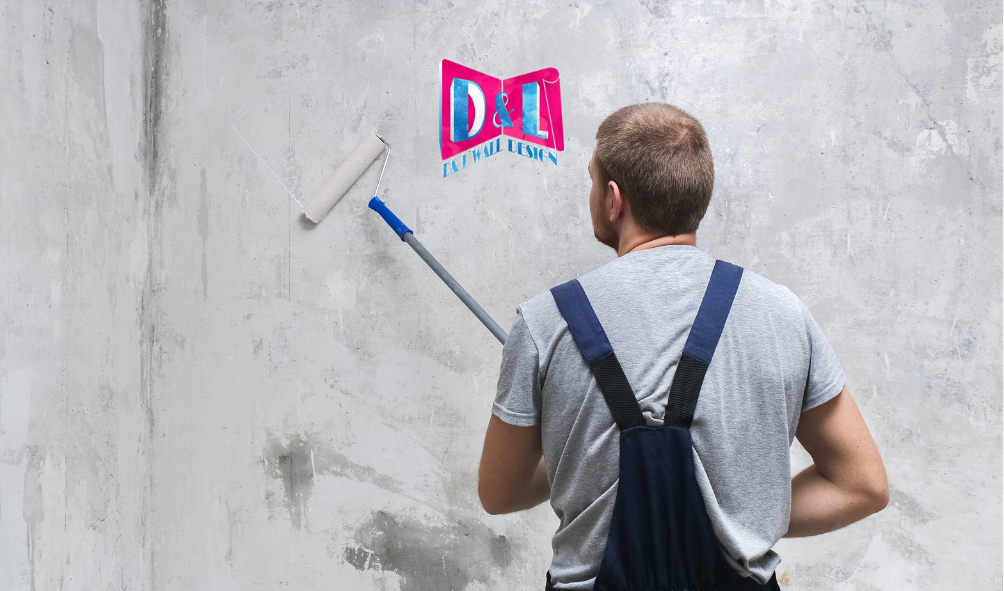Understanding Wall Priming: What It Is And Why It Matters
Wall priming is a crucial step in the process of wall covering that involves applying a preparatory coating to the surface before painting or hanging wallpaper. Often underestimated, this step plays a significant role in ensuring the quality and longevity of the final finish. Priming a wall serves several essential purposes. These are:
- It creates a uniform surface that helps the paint or wallpaper adhere better, which is particularly important when dealing with porous materials like drywall.
- The surface might absorb too much product without a primer, leading to uneven color and potential peeling.
- Primer acts as a sealant, blocking stains and covering inconsistencies that might otherwise mar the appearance of the finished wall. It can mask underlying colors or patterns, providing a clean, neutral base that ensures the new covering appears vibrant and true to its intended shade.
- Primers also help in enhancing the durability of paint or wallpaper, providing increased resistance to moisture, mildew, and other environmental factors that can degrade wall coverings over time.
- Another benefit of using Pria Mer is cost-effectiveness. By reducing the amount of paint or wallpaper needed, primer makes the process more economical in the long run.
In summary, wall priming is indispensable for achieving a smooth, uniform, and long-lasting wall covering that adds aesthetic and economic value to any space.
The Science Behind Wall Priming: How It Prepares Surfaces
Wall priming serves as a critical step in the preparation of surfaces before the application of wall coverings, playing a fundamental role in ensuring durability and a polished finish. The science behind wall priming involves creating an even and adhesive-friendly surface, which directly enhances the longevity and appearance of both paint and wallpaper. Primers are specially formulated coatings applied prior to painting or wallpapering to address certain wall issues such as porosity, stains, and uneven textures.
By penetrating and sealing porous surfaces, primers prevent the substrate from absorbing excessive paint or adhesive, which could otherwise lead to uneven color distribution and a blotchy appearance. Primers are also designed to enhance adhesion, which is crucial for preventing the peeling or blistering of wall coverings. This is achieved by creating a slightly tacky yet uniform surface that allows the paint or adhesive to bond more effectively.
Furthermore, specialized primers can block and seal stains or discolored spots, ensuring that they do not bleed through subsequent layers of paint or wallpaper. With these functions, priming is not merely a preparatory step but a critical procedure that guarantees the integrity and aesthetic quality of wall coverings, enabling them to maintain their intended appearance and function over time.
Types Of Primers: Choosing The Right One For Your Walls
When it comes to wall priming, selecting the appropriate primer is crucial for ensuring a smooth and lasting wall covering. Primers are essential in preparing the wall surface, creating an ideal foundation that enhances adhesion, improves coverage, and prolongs the life of the paint or wallpaper applied afterward. There are several types of primers available, each suited to different wall conditions and types of coverings.
- Latex primers are water-based and are typically used for drywall, bare wood, or previously painted surfaces. They are easy to clean up, low in odor, and dry quickly, making them a popular choice for interior priming. Oil-based primers, on the other hand, are excellent for blocking stains and providing durable adhesion on surfaces like wood, metal, or previously varnished areas. They are often chosen for exterior applications or areas exposed to high moisture or heavy traffic.
- Shellac-based primers are another option, known for their superior sealing properties. They are particularly effective at blocking heavy stains from water and smoke and are also useful for covering unpleasant odors. While shellac primers are versatile, they are often more challenging to work with due to their strong odor and alcohol base.
Choosing the right primer entails assessing the surface’s condition, the intended wall covering, and the environmental factors. Selecting an appropriate primer will significantly contribute to the overall success of any wall covering project.
Step-By-Step Guide To Properly Prime Your Walls
Properly priming your walls is a crucial step in ensuring that your wall coverings adhere well and remain durable over time. Start by preparing the surface; this involves cleaning the walls thoroughly to remove dust, grease, and any flaking paint.
- Using a mild detergent or a specialized wall cleaner, scrub the walls with a sponge or cloth and then rinse with clean water.
- Allow the surface to dry completely before moving on to the next step.
- Inspect the walls for any imperfections, such as holes, cracks, or dents. Use a filler or spackle to repair these areas, smoothing them out with a putty knife.
- Once dry, sand these repaired spots until they are flush with the surrounding surface, ensuring a smooth base for priming. Lightly sanding the entire wall may be necessary to promote better primer adhesion.
- Choose the appropriate primer based on both the type of wall surface and the material of your wall covering.
- Apply the primer evenly with a high-quality roller or brush, starting from the top and working your way down. Be sure to cover all areas, including corners and edges, to ensure consistent coverage. Allow adequate drying time as specified by the primer manufacturer.
By following these steps, you will create a solid foundation for any wall covering, resulting in a professional and lasting finish.
Common Mistakes In Wall Priming And How To Avoid Them
When priming walls for wall covering, several common mistakes can greatly affect the final outcome, but understanding these pitfalls can help ensure a smooth, durable finish. One frequent error is neglecting to clean and prepare the wall surface adequately before applying primer. Dust, grease, and old paint can prevent primer from adhering properly, leading to uneven coverage and peeling. To avoid this, thoroughly clean the wall and remove any loose materials and debris.
Another mistake is using the wrong type of primer for the wall or covering material. Primers are designed for specific surfaces, such as drywall, wood, or masonry, and choosing the incorrect one can result in poor adhesion and coverage. Checking the manufacturer’s recommendations for both primer and wall covering ensures compatibility. Skipping the primer altogether is also a common oversight that can result in inconsistent absorption rates, leading to blotchy finishes.
Applying primer evenly is another critical step. Rushing through the application can lead to streaks and missed spots, so take the time to use smooth, even strokes with a roller or brush. Finally, failing to allow the primer to dry completely before applying the wall covering can compromise adhesion and finish quality. Always check the product’s drying times and ensure adequate ventilation to expedite the process.
The Long-Term Benefits Of Proper Wall Priming In Wall Covering
Proper wall priming offers numerous long-term benefits when it comes to wall covering, ensuring both aesthetic appeal and durability. Priming creates a smooth and uniform surface, which enhances the adherence of paint or wallpaper. This initial step helps prevent peeling, bubbling, or flaking over time, significantly extending the life of the wall covering. As a result, there is less frequent need for touch-ups or replacement, which can become costly and labor-intensive.
Another significant advantage of wall priming is its ability to seal porous surfaces. Unprimed walls, particularly those made from drywall or plaster, can absorb moisture and lead to issues such as mold growth. Priming creates a protective barrier that inhibits moisture penetration, maintaining the structural integrity of the walls and promoting a healthier indoor environment. Additionally, priming can sometimes contain stain-blocking agents, which prevent unsightly marks or imperfections from bleeding through the final coat of paint or wallpaper.
Primers also typically contain substances that enhance color uniformity and brightness of the topcoat, allowing the chosen paint colors or wallpaper patterns to appear vibrant and true to their intended design. This aids in achieving the desired aesthetic outcome without the need for multiple coats. Ultimately, proper wall priming acts as a foundation for durable and visually appealing results, making it an essential practice for effective and economical wall covering.
For the best, hassle-free wall priming, wallpaper removal, and installation, hire a reliable wallpaper contractor in Miami, such as D&L Wall Design, to help you create a stunning space. Contact D&L Wall Design at 786 389-3914 for a FREE consultation today!

